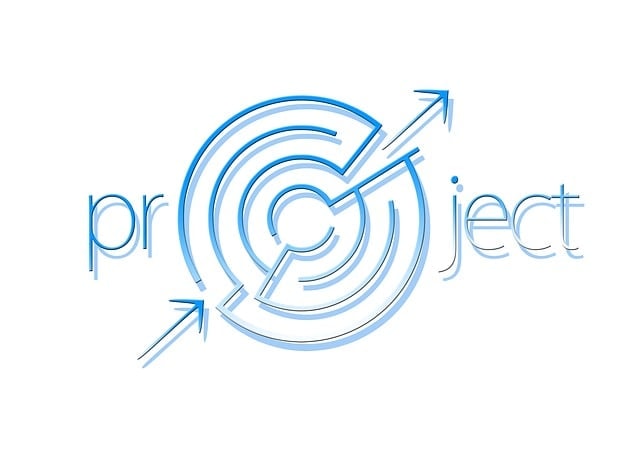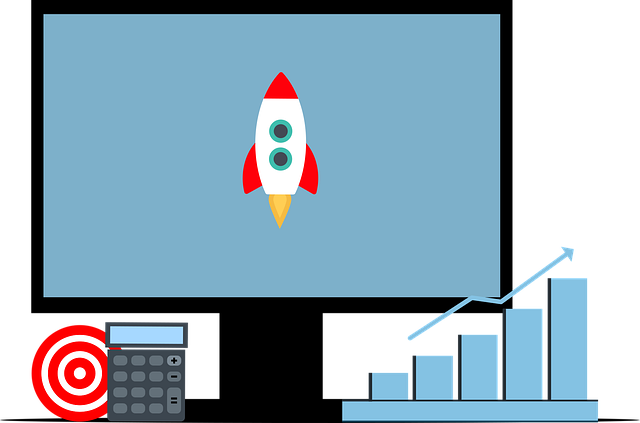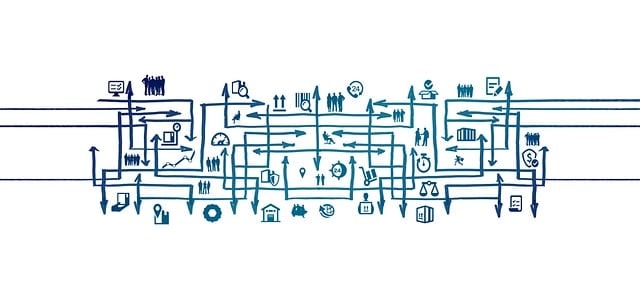
.jpg)
Sprint Zero: Where NoCode Dreams Take Shape - A Guide to Project Discovery
Published on December 29, 2024
By Marianella Saavedra Terkes · 10 minute read
Every great web application and digital solution starts with a vision. At Kreante, we’ve perfected the unique approach of the popular Sprint Zero. Our structured three-week discovery phase is where we transform entrepreneurial dreams into actionable NoCode/LowCode projects. Our development process combines automation tools and design expertise to deliver high-quality digital solutions that meet our clients' needs precisely.

The Challenge of Starting
In the fast-paced world of digital transformation, entrepreneurs often find the initial step of transforming their vision into a concrete plan daunting. Many brilliant ideas for web applications remain just that—ideas—because the path to execution seems overwhelming. At Kreante, our Sprint Zero methodology bridges this gap, helping clients develop their ideas into concrete plans efficiently and effectively, serving as a bridge between vision and reality.
Our Sprint Zero process is meticulously designed to tackle these initial hurdles by providing a structured framework that guides entrepreneurs through the complexities of early-stage project development. By focusing on strategic alignment, we ensure that each project is not only technically feasible but also aligned with the business's broader goals and objectives. This strategic consideration is vital for achieving long-term success and growth.
During Sprint Zero, we work closely with our clients to identify key project characteristics and define success criteria. Through collaborative workshops and stakeholder interviews, we gather insights that inform the project's direction and scope. Our team of seasoned designers and developers then translates these insights into actionable plans, complete with user stories, prototypes, and a detailed timeline.
By leveraging our expertise in nocode and lowcode tools and technologies, we empower clients to visualize their future digital products and make informed decisions about their development journey. This approach not only reduces the risk of project failure but also accelerates the path to execution, allowing entrepreneurs to bring their ambitious projects to life with confidence and clarity.
For further insights on building your application affordably and quickly, check out our detailed guide on the Top 6 Steps to Build Your Application in 2024.
Understanding Sprint Zero
As a nocode/lowcode agency with extensive experience in digital transformation, we’ve refined our Sprint Zero process to maximize efficiency. Our approach combines the power of leading nocode/lowcode tools like Bubble, FlutterFlow, WeWeb, Webflow, and more, with automated workflows to create scalable web applications and optimize the site for business growth. This experience-driven methodology ensures that each project benefits from our deep understanding of nocode development solutions.
The key components of Sprint Zero include:
User story development and documentation
Low-fidelity prototype creation using professional design tools
NoCode/LowCode technology stack selection
Project timeline planning with automation considerations
Database architecture drafting for scalable solutions
What makes Sprint Zero unique at Kreante is its focus on tangible outcomes. By the end of these three weeks, clients don’t just have a better understanding of their project—they have concrete deliverables they can use, whether they choose to proceed with our nocode agency or explore other options.

Understanding Project Management in the Nocode/Lowcode Landscape
In the realm of digital transformation, project management is the backbone that ensures the successful realization of ambitious projects. It involves the detailed planning, organization, and management of resources to achieve specific objectives. Effective project management guarantees that projects are completed on schedule, within budget, and adhere to the required quality standards.
Our Sprint Zero phase is distinguished by the involvement of a dedicated project manager who guides the process from start to finish. This ensures that every aspect of the project is meticulously planned and executed, providing a seamless transition from concept to actionable plan.
In the industry, creating successful projects requires a focus on strategic alignment and customer satisfaction. By drawing lessons from our past projects, we have refined our project management practices to better serve our clients.
Definition and Approaches
At Kreante, Sprint Zero is our foundational phase in the project management landscape, specifically within the nocode/lowcode development sphere. It marks the crucial starting point for ambitious projects, where we transform ideas into actionable plans. Our approach is characterized by its focus on strategic alignment and comprehensive planning, ensuring that each project is poised for success from the very beginning.
The Kreante way of Sprint Zero emphasizes discovery and preparation. During this phase, our project managers and stakeholders collaborate closely to define the project's vision, objectives, and scope. Through a three to five meetings, we gather insights, align expectations, and establish a shared understanding of the project's goals. This process helps us mitigate risks and set a clear direction for the project's future.
Our methodology integrates elements of both traditional and Agile project management approaches. We combine the structured planning of traditional methods with the flexibility and iterative nature of Agile practices. This hybrid approach allows us to thoroughly explore project requirements while remaining adaptable to changes and new insights.
Key activities within our Sprint Zero are designed to provide clear, actionable outcomes and include:
User Story Development: Crafting detailed narratives that outline the user's journey and interactions with the application.
Prototype Creation: Developing low-fidelity prototypes to visualize the application's functionality and user flow.
Technology Stack Selection: Choosing the appropriate nocode tools and platforms to meet project requirements.
These tasks culminate in tangible deliverables, including:
Detailed Project Timelines: Outlining phases and milestones for efficient project execution.
Resource Plans: Allocating necessary resources for successful development.
Technical Stack Definition: Providing comprehensive technical insights and guidelines.
By the conclusion of our Sprint Zero, clients receive a project blueprint, complete with actionable steps and defined success criteria, ensuring a strategic and well-prepared launch.
Overall, Kreante's Sprint Zero is an essential phase that lays the groundwork for successful project execution. It ensures that projects are not only technically feasible but also strategically aligned with the organization's broader objectives. By investing time and effort in Sprint Zero, businesses can enhance their ability to manage resources effectively, achieve project goals, and drive long-term growth.

Characteristics of Successful Projects
One of the defining characteristics of successful projects is strategic alignment. This means that the project is not just an isolated task but is integrated with the organization’s broader strategic objectives and goals. Strategic alignment ensures that every project undertaken delivers tangible value to the business and its stakeholders.
To achieve strategic alignment, it is crucial to clearly define the project’s objectives, scope, and deliverables. This involves a thorough understanding of the organization’s overall strategy and how the project fits into this larger picture. Additionally, identifying and managing risks proactively is essential to ensure that the project remains on track. Proper resourcing and funding are also critical components, as they ensure that the project has the necessary support to succeed. By aligning projects with strategic goals, organizations can ensure that their efforts contribute to long-term success and growth.
Strategic Alignment
Strategic alignment is the cornerstone of successful project execution, especially in the context of Sprint Zero. It ensures that each ambitious project is not only technically feasible but also perfectly aligned with the company's broader business objectives and vision. By focusing on strategic alignment, we create a robust framework that guides the project from inception to completion, ensuring that it delivers tangible value to the organization and its stakeholders.
In Sprint Zero, strategic alignment begins with a comprehensive review of the project's goals and objectives. This involves engaging with key stakeholders through workshops and interviews to gather insights and establish a shared understanding of the project's direction. By aligning the project's scope with the organization's strategic vision, we ensure that every task and milestone contributes to achieving long-term success.
Moreover, strategic alignment in Sprint Zero includes a detailed analysis of the project's potential impact on the business. This involves evaluating how the project will support growth, enhance brand communication, and improve operational efficiency. By integrating these considerations into the planning process, we ensure that the project is not just an isolated endeavor but a vital component of the organization's strategic plan.
Through careful planning and strategic alignment, Sprint Zero helps manage resources effectively, control budgets, and mitigate risks. This approach not only enhances the quality of the final deliverable but also strengthens the ability to adapt to future challenges and opportunities. By investing in strategic alignment from the outset, everyone can achieve their project goals with confidence and clarity, driving results and fostering long-term growth.

Week-by-Week Breakdown
Week 1: Vision and Requirements
During the first week, we focus on understanding and documenting the project’s core requirements for web application development and breaking them down into manageable tasks. This involves:
Initial vision meeting where clients share their goals and objectives for their digital solution
User story mapping sessions to identify key features and automation opportunities
Stakeholder interviews to ensure all perspectives are considered
Definition of success criteria and project constraints
Our team facilitates these sessions using collaborative tools like that make it easy for clients to participate actively in the development process, regardless of their technical background.
Week 2: Design and Architecture
The second week is dedicated to translating requirements into tangible designs and technical plans for the project:
Creation of low-fidelity wireframes in Figma
User flow mapping and validation for optimal experience
NoCode technology stack evaluation
Initial database schema design for scalable solutions
Integration requirements assessment for automated workflows
During this phase, we use tools like Figma and Figjam or Whimsical for collaborative design sessions, ensuring clients can easily visualize their future digital product.
Week 3: Planning and Documentation
The final week focuses on consolidating all insights and creating actionable plans for nocode development:
Detailed project timeline development with automation milestones
Resource allocation planning for efficient development
Risk assessment and mitigation strategies
Technical documentation compilation
Final deliverables preparation including all design assets

The Power of User Stories in NoCode Development
One of the most valuable aspects of any Sprint Zero the approach to user story development within the nocode/lowcode context. We help clients break down their vision into clear, actionable user stories that follow the format:
"As a [type of user], I want to [perform an action] so that [achieve a goal]."
This structured approach helps in:
Identifying all key functionality for the web application
Prioritizing features and automation opportunities
Understanding user experience requirements
Creating clear development guidelines for nocode platforms
The Art of Low-Fi Prototyping
Our low-fidelity prototypes serve as visual representations of the project's functionality without the distraction of design details. Using professional design tools like Figma, these prototypes:
Facilitate early user feedback on the digital solution
Identify potential usability issues before development
Help validate user flows and automation processes
Enable quick iterations in the nocode environment
Technology Stack Selection for Modern Web Applications
Choosing the right NoCode/LowCode tools is crucial for project success. As experienced developers, we carefully evaluate various web application platforms considering:
Project requirements and complexity
Automation capabilities and integration needs
User experience design requirements
Scalability and performance optimization
Budget and maintenance considerations
Common tools we assess include:
Bubble for complex web applications and databases
Webflow for content-rich websites and e-commerce solutions
FlutterFlow for creating visually stunning mobile applications
Xano for robust backend development and API integration
WeWeb for building dynamic and interactive web platforms
Airtable for data management and automation
Make for advanced automation workflows
Additional nocode tools based on specific requirements
Database Architecture Planning for Scalable Solutions
A well-planned database architecture is fundamental to any successful digital product. Our approach includes:
Entity relationship mapping for complex data structures
Data flow documentation with automation considerations
Scalability planning for future growth
Security implementation strategies
Integration requirements with existing systems
Project Management Software and Tools
In today’s digital age, project management software and tools are indispensable for managing projects effectively. These tools help project managers plan, organize, and control resources, providing a structured approach to project execution. Virtual project management tools, in particular, have revolutionized the way teams collaborate and communicate.
With the rise of remote work, virtual project management tools have become essential for maintaining productivity and cohesion among project teams. These tools offer real-time visibility into project progress and performance, enabling project managers to make informed decisions and take corrective actions when necessary. Collaboration software and project management platforms facilitate seamless communication, task management, and resource allocation, ensuring that all team members are aligned and working towards common goals. By leveraging these tools, organizations can manage their projects more efficiently, leading to successful outcomes and sustained business growth.
Project Timeline and Strategic Alignment in the NoCode Space
The final deliverable includes a comprehensive project plan that outlines:
Development phases and milestones for the web application
Resource requirements for nocode development
Timeline estimates with automation efficiencies
Budget projections for all tools and services
Risk mitigation strategies specific to nocode platforms
The Magic of Digital Transformation
Our experience as a nocode/lowcode agency has demonstrated that successful digital transformation hinges on selecting the right blend of tools and methodologies. Whether it's building intricate web applications with Bubble, designing captivating websites using Webflow, or implementing robust automation workflows with tools like WeWeb, FlutterFlow, Xano, Airtable, Make, and more, our tailored approach ensures each solution is perfectly aligned with our clients' specific requirements.

Participants in Sprint Zero receive several key benefits:
Clear Project Vision
Detailed documentation of web application requirements
Visual representations of the digital solution
Defined success criteria for nocode development
Reduced Risk
Detailed project timeline for efficient development
Resource allocation plans for nocode platforms
Budget estimates for all tools and services
Actionable Plans
Early identification of potential technical challenges
Validated nocode approach and tool selection
Clear understanding of automation opportunities
Complete Documentation
User stories and technical requirements
Design specifications and wireframes
Prototype demonstrations and technical architecture
Looking Forward
The evolution of nocode development is characterized by the ongoing introduction of innovative tools and automation capabilities. Our proficiency in delivering web applications and digital solutions utilizing nocode/lowcode platforms enables us to effectively guide businesses through their digital transformation journey. A pivotal aspect of this journey is mastering clear communication, as highlighted in our article "Beyond Assumptions: Mastering Clear Communication in Project Management". Effective communication is essential in ensuring that all stakeholders are aligned and that project objectives are achieved efficiently. By promoting open dialogue and collaboration, we assist businesses in confidently navigating the complexities of digital transformation.
As we look ahead, our dedication to innovation and excellence remains unwavering. At Kreante, we are committed to empowering our clients with the tools and knowledge necessary to succeed in the ever-changing digital landscape. Our approach to the Sprint Zero methodology exemplifies how we transform ambitious projects into reality, ensuring they are strategically aligned with business goals and prepared for long-term success. By leveraging our expertise in nocode development, strategic alignment, and project management, we continue to drive real business results and support our clients in realizing their vision.

Accelerating Software Development with Vibe Coding and AI Tools at Kreante

Kreante: Accelerating Your AppDevelopment with Low-Code, AI, and “Vibecoding”




.png)


.svg)
